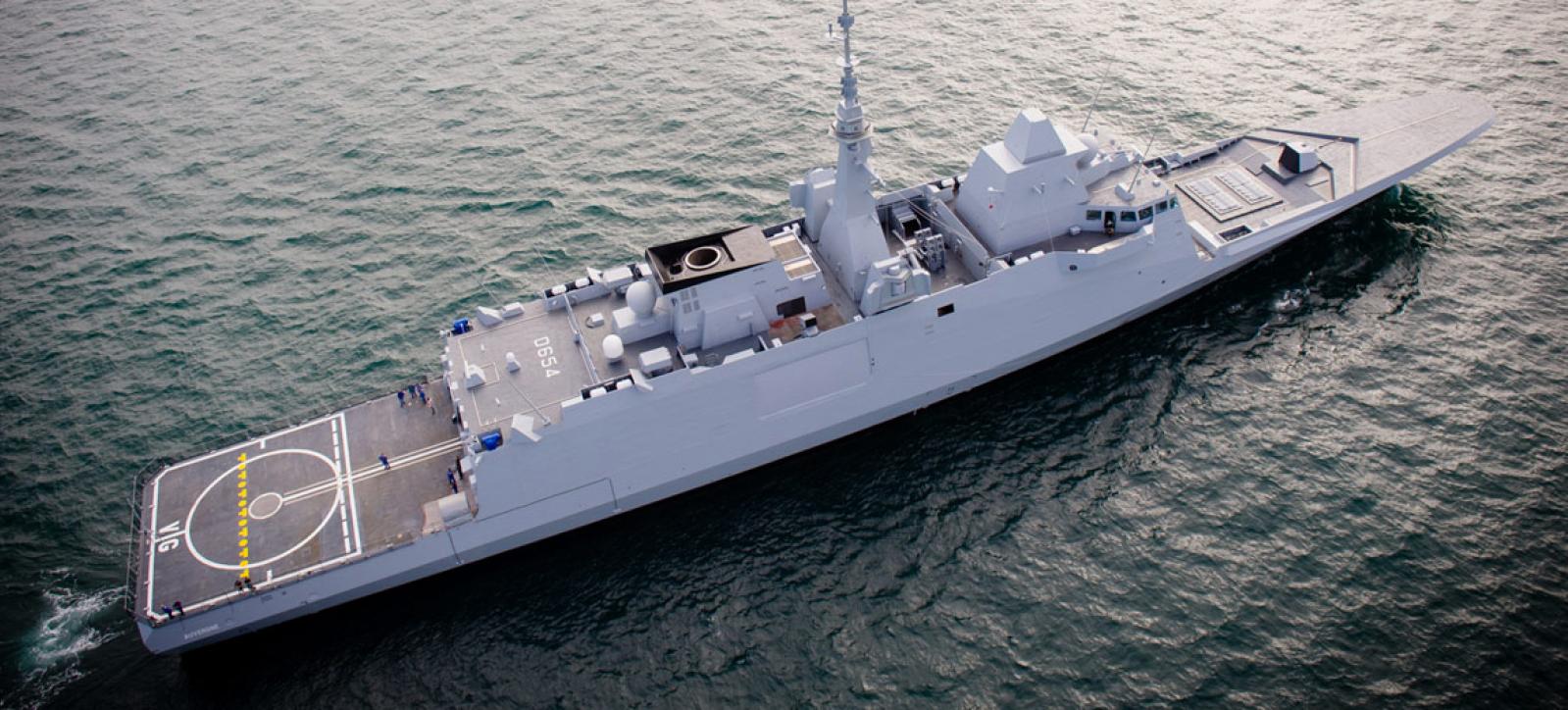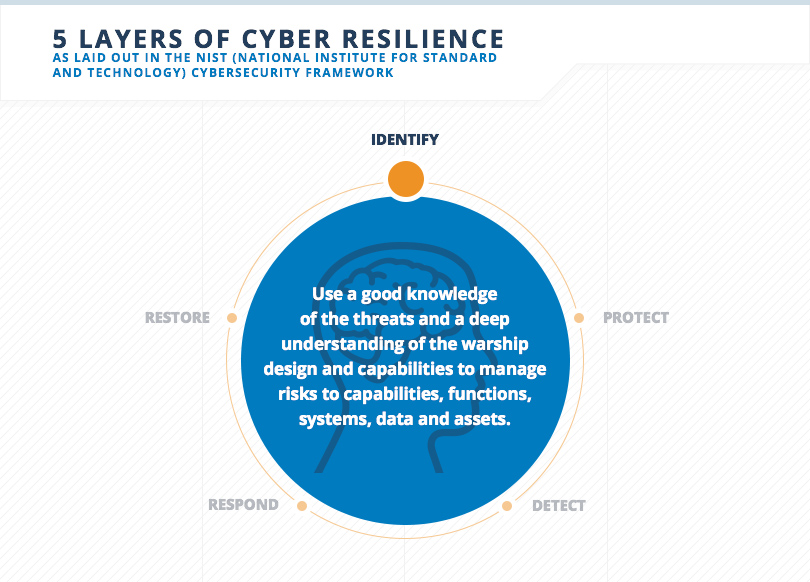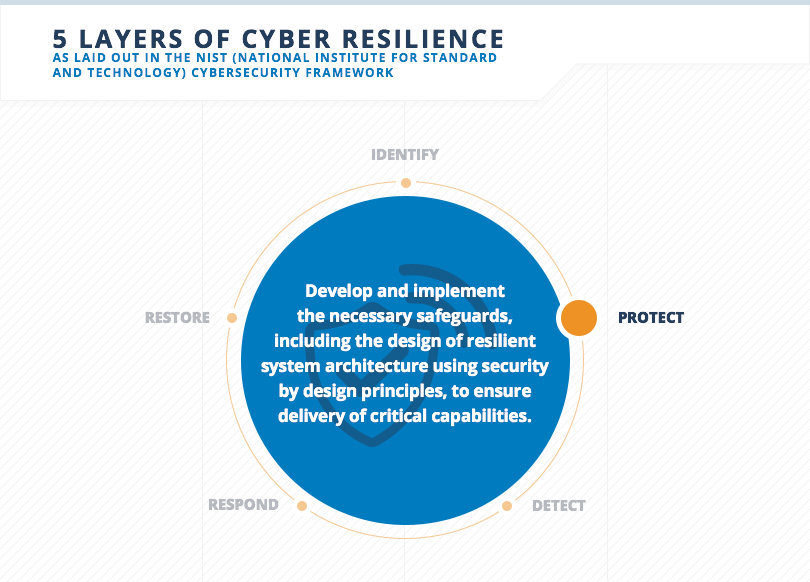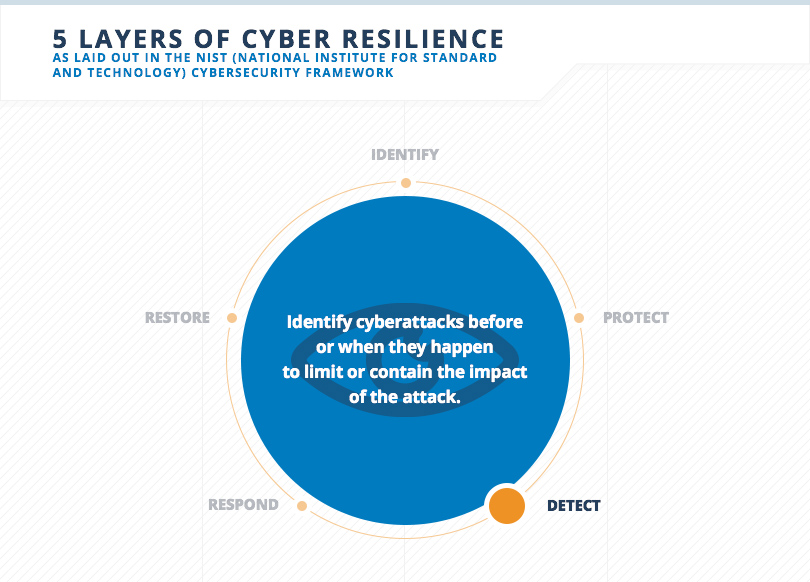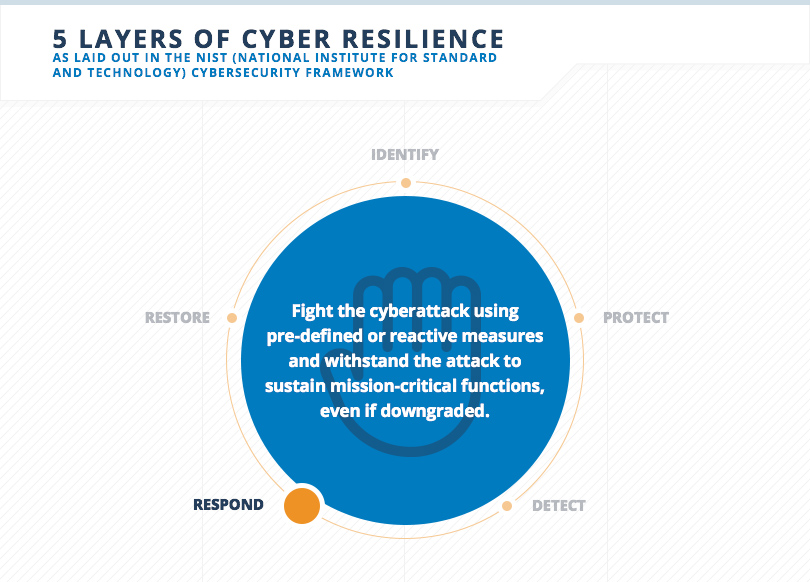Don't hold your breath
Naval Group is leading the AIP revolution in submarine technology. AIP stands for Air Independent Propulsion. This technology gives non-nuclear submarines unprecedented operational ability by enabling to stay submerged for weeks at a time.
Traditionally, non-nuclear submarines run on diesel and electricity. Underwater they use battery power. After running submerged for a few days, the batteries are drained and the submarine must surface. At which point the diesel generator recharges the batteries, while the submarine runs at snorkel depth, traveling just below the surface.
A submarine that has to surface every few days loses the element of surprise and exposes itself to detection. Enter Air Independent Propulsion, which enables diesel boats to stay submerged for weeks at a time. It is estimated that nearly all of the world’s major submarine fleets will integrate AIP technologies into their non-nuclear boats.
Cracking the problem
Naval Group has developed an AIP system powered by 2nd generation fuel cells call FC2G.
- Proven: The 2nd generation fuel cells convert chemical energy into electricity, using hydrogen as the fuel and oxygen as the oxidizer.
- Self-contained: The Naval Group technology cracks diesel fuel in a reformer to extract the hydrogen, removing the need to carry large quantities of hydrogen on board.
- Durable: The oxidizer is made by mixing liquefied oxygen with nitrogen to produce air, which is less corrosive than pure oxygen.
- When the hydrogen is mixed with the air, it generates electricity to recharge the submarine’s batteries and produces water, which is used in the cracking process. Naval Group holds over 40 patents on its FC2G AIP technology.
- Tested: The Naval Group FC2G AIP system can increase submerged endurance by several weeks at low speed without compromising stealth or submersion.
- Modular: The entire FC2G system is modular and can be fitted on any submarine with a dimeter of 6 meters or more, whether as part of a new construction or as a retrofit.
- Compatible: It is compatible with all existing and future battery technologies and is designed to last the for the submarine’s lifetime.
From the keel up: designing and integrating cyber resilience
Most people think of warships as floating steel fortresses. In reality, today’s—and tomorrow’s—vessels are floating, connected digital systems. Link them together in a fleet or task force and they become a seaborne network of systems.
In the same way that hackers can bring the internet to a halt, steal data from corporate systems and even damage physical systems by taking control of the onboard logic controllers of hardware, cyberattacks are a menace for such modern and digital warships. It is now possible for a terrorist cell or state to impair the functioning of a warship component, misappropriate information, take control of the vessel, its data system, its weapons system or one of the multiple control-monitoring controllers used both for power-supply management or ship command.
Cyberattacks have become the fourth war space, along with land, sea and air attacks, where the ship and crew have to combat. In its role as naval system designer and integrator, Naval Group takes a “keel up” approach to naval cybersecurity, designing and building warships that integrate layers of cyber defenses and counter measures to create true cyber resilience.
Drones are the newest crew members
Drones have captured the public imagination, spawning a new generation of hobbies, sports and businesses. The scope of their applicability is endless, ranging from surveillance aids to defense assets. They have been embraced by modern navies seeking to extend mission capabilities. Drones – unmanned systems in naval jargon — are highly suited for dull, dirty and dangerous tasks. They can be used in the air, at the surface and underwater to extend a ship's, or a fleet’s, operability in terms of situational awareness, information gathering and force projection.
In its role as naval system designer and integrator, Naval Group is at the forefront of drone integration on warships.
I4® Drone: the new all-environment, multi-drone mission system
I4® Drone is the mission system for drones designed and developed by Naval Group to manage drone operations during the various stages of a mission, namely during:
- mission preparation;
- mission implementation;
- exploitation of data, recovery and mission restitution.
I4® Drone manages naval drone operations in all environments — in the air, at the surface and underwater. It can be deployed on surface vessels, submarines and even land-based command centers. Thanks to I4®'s full interoperability, drone management is significantly facilitated and seamlessly integrated for joint or coalition operations.
D19 multi-mission torpedo drone
Drawing on its experience in autonomous underwater vehicles, Naval Group has developed a new Unmanned Underwater Vehicle (UUV) called the D19. The family of D19 drones is equipped with modular front-end payload, meaning it can easily be adapted for each mission. The D19 may be used in a wide variety of missions:
- Identification, surveillance, recognition;
- Electronic warfare;
- Anti-submarine warfare;
- Underwater mobile target;
- Mine countermeasures;
- Rapid environmental assessment;
- Mine laying.
Submarine drone docking station
In parallel to the D19, Naval Group has developed several homing and docking solutions for UUVs launched from a submarine. The most recent docking station is capable of recharging the drone using induction, secure wireless data transfer, an acoustic data link for guidance, and a redeployment system. Sea trials of the station began in October 2016.
HEUDYP (Head Up Display for Pilot) for drone operators
Developed by Naval Group and CLARTE, a French virtual reality research enterprise, using information gathered through close collaboration with the French Navy, HEads Up DisplaY for Pilot (HEUDYP) is a system designed to assist drone operators during takeoff and landing of ship borne drones. Using augmented reality, HEUDYP provides the pilot with more than just a visual, it provides the pilot with information regarding atmospheric conditions and the ship’s movement to assist with the launch and recovery from the ship’s deck.
i-Maintenance: Giving ships an operational advantage
While today’s warships are among the most sophisticated digital platforms that exist, maintenance cycles remain resolutely manual. That’s why Naval Group is leading a revolution in ship maintenance to fight a long-standing enemy of any fleet: the scheduled overhaul.
Using our vast experience in naval architecture and construction as well in optimizing the technical availability and lifecycle costs of our customers’ fleets, we have recently introduced a new concept of intelligent maintenance or i-maintenance. The objective is to enable the ship to stay at sea for as long as possible in four ways:
Predictive maintenance
The data captured by system sensors are used to prepare for and plan scheduled maintenance, including overhauls and upgrades. Predictive maintenance is a way to spot an impending failure in advance, prevent unexpected breakdowns at sea, keep costs under control, reduce the need to return to port for major work and shorten the time when there. All this helps contribute to greater availability.
On-board diagnostics
Naval Group i-maintenance gives the ship enhanced, centralized onboard diagnostic capabilities that cover 100% of all its systems, including combat systems. Using digital technologies such as tablet-based maintenance manuals, augmented reality (AR) and virtual reality (VR), maintenance engineers can perform more complicated maintenance and repair tasks on their own at sea.
Remote assistance
To further enhance operational readiness, the ship’s engineers can also request remote assistance from the Naval Group COSIN Center of Operational Excellence. The COSIN brings together Naval Group experts, reference platforms and exact duplicates of shipborne systems, a training center, and a high security data center. The first COSIN is currently being deployed in Toulon, France
Cybersecurity
Because ship maintenance management systems are increasingly integrated with operational systems, they are often seen by hackers as soft targets. Naval Group has applied its robust cybersecurity framework to i-maintenance to protect the data used in maintenance operations as well as communications with the COSIN. These measures range from integrating cybersecurity into maintenance and diagnostic systems to fostering a culture of cybersecurity awareness among maintenance engineers and teams.
Looking further into the future, i-maintenance thinking is also part of Naval Group’ ship development process. Naval Group concept vessels, like the SMX® 3.0 submarine and Belh@rra® new generation digital frigate, are designed with modular “plug-and-play” technologies and systems that can be swapped out and replaced easily during repairs and upgrades.
To ensure its present and future customers’ satisfaction, DCNS proposes innovative solutions to meet the new requirements of in-service support for digitised warships.
Ensuring a buoyant future for offshore wind
Naval Group is one of the leading player in the field of floating offshore wind farms. Our expertise dates to 2008 and takes advantage of long history in naval architecture and construction.
Our first foray into floating wind farms dates back to 2008 and the WinFlo research program. It was followed in 2014 by Sea Reed, a R&D project between Naval Group and Alstom Renewable Power (later GE Energy) that laid the foundations for our current participation in the Ile de Groix wind turbine pilot project in the south of Britany. Naval Group and French construction firm Vinci will provide the floating platform while General Electric will supply the turbines.
Over the course of these projects, we have refined an innovative, production-ready platform design. Discover how it adapts to the environmental and economic parameters of any floating offshore wind farm project.
Balancing act
Capable of withstanding punishing offshore conditions, the Naval Group hybrid floater is designed to provide a highly stable platform for a 400-tonne wind turbine measuring over 100 meters high. The floater’s architecture, comprised of three stabilizing columns at each vertex connected by three pontoons, is inspired by Naval Group’s experience in building submarines and aircraft carriers.
Semi-submersible design
The platform is between 65 and 75 meters wide and has an unballasted draft of just five meters, which means that assembly and maintenance of the entire wind turbine can be done in port. The passive ballasts are filled with seawater to ensure maximum stability.
Hybrid structure
The Naval Group floater design mixes concrete and steel to provide the most competitive and efficient solution. Concrete is used for the structural components most exposed to stress and wear, especially in the conditions found along the Atlantic coast, while naval grade steel is used in the floating parts of the platform.
Cost effective assembly
They hybrid structure can be manufactured in most ports, as long as locally sourced concrete and steel are readily available. This contributes to local economic activity and employment in the region around the port. Based on Naval Group’ experience in naval construction, the fabrication methods have been streamlined and industrialized for maximum cost efficiency.
Time saving installation
Once the platform is built and partially submerged quayside, the wind turbine is installed directly on the platform and then the whole structure is towed upright onto site and attached to the mooring. To save time, the mooring system is installed while the platform is being built. This approach eliminates the need for expensive and lengthy offshore campaigns, which are often subject to delays due to weather, which further helps to improve the competitiveness of the Naval Group semi-submersible platform.

